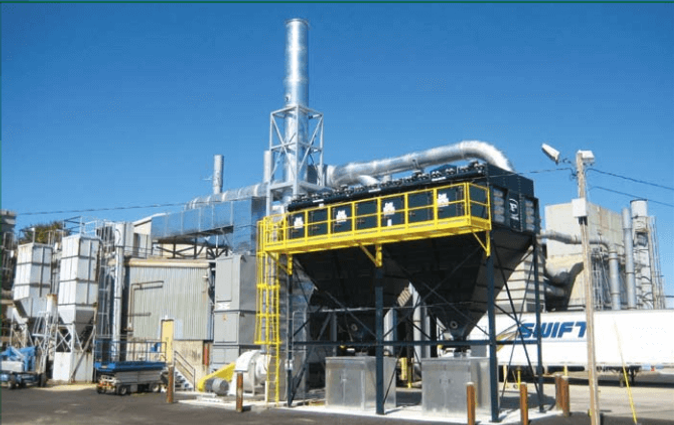
Self-Induced Wet De-Dusters
Self-induced wet de-dusters "BZ series" incorporate centrifugal and self-induced spray zones, eliminating the need for pumps, nozzles, or high-speed rotors. They have a constant resistance to airflow and high collection efficiency, making them suitable for handling both soluble and insoluble dust particles.
As the name implies, these Self-induced wet de-dusters “BZ series” incorporates unique system of centrifugal and self-induced spray zones which presents following advantages:
It does not need pumps, nozzles, high speed rotors, or other spray producing equipment, thus avoiding wear and chokage normally associated with such equipment.
No horizontal surface in the spray generation, thus avoiding dust and sludge build-up which would give rise to resistance to air flow.
It uses less water than any comparative wet dust collectors. It can handle soluble and insoluble dust particles.
Once modified, this version of wet scrubber is most suitable for conversion to cater for hazardous and explosion risk applications.
Wet de-dusters have a constant resistance to air flow and high collection efficiency independent of size. This is a marked contrast to other type of scrubbers or cyclones.
Because the high turbulence is achieved within the spray zone, the internals are self-cleaning, thus will not allow the dust to clog under operating conditions; so, the agglomeration and sticky residues that plug fabric filters are not a problem to this de-duster.
PRINCIPLE OF OPERATION:
The dust laden air is brought down by two vertical inlets on the main water surface where individual streams are deflected to a zone where violent collision with water occurs. The mixing of the dust-laden air stream and liquid occurs, and intensive water turbulence is induced, carrying with them a considerable volume of water into the inner chamber causing the air to pass through an intense spray curtain, where by the particulate matter saturates and is collected. The droplets in the air stream are processed through a mist eliminator located above the scrubbing chamber, and particulate material is deposited on the bottom tank or hopper for recovery or disposal. Water level is maintained automatically and make-up water is only needed to compensate for evaporation or sludge removal.
The discharge arrangement can be auto sludge conveyor or the rack-out bottom hopper.
APPLICATIONS:
Chemical and Pharmaceutical industry:
Servers to abate the processes dust where Mixing, Palletizing, Crushing & Grinding, Sifting, Sieving, Drying, Weighing, Packing and Bagging are carried out.
Engineering:
Dust control for grinding and polishing of magnesium, titanium, white metal machining etc.
Foundries:
Serves the operations such as the Knocking out, Dressing, Grinding, Shot blasting, Wheel abrasion of casting, Sand preparation and pouring of casting.